As a former artilleryman Napoleon understood that artillery was instrumental in winning the day for him. It says everything when he is quoted as saying that God fights on the side with the best artillery.
Napoleon professionalized the artillery train, dispensing with civilian drivers and attendants and replacing them with professional, well-paid soldiers. He also selected lighter guns than those used by other nations, preferring to have a maneuverable artillery corps over one that was valued solely for the sheer weight of its shot. Speed was an essential factor in Napoleons method of warfare, and much of his success hinged on getting his guns into optimal firing positions, ready and able to relocate when necessary.
Napoleon would use his artillery batteries to focus on a weak points of the army of his foe, or use massed fire to brazenly blast an opening through their line infantry that he could use to exploit, driving his forces into the breach and entangling his opponents from multiple, chaotic directions. In their confusion, bravery buckled under mass disorder and his opponent would be forced to cede the day and his pride to Napoleon, who, at his best, could orchestrate a battle like a maestro of the symphony orchestra.
This sword is a replica of a sword that would be used by an artillery officer of the Grande Arm who may have pointed the tip of his sword at his foes from alongside his guns, directing gouts of fire-belched iron into enemy ranks a field away. The sword has an unsharpened blade of high carbon steel. The hilt is of brass and the guard features the crossed cannon and flaming mortar bomb of the artillery. The grip is of leather inlaid with twisted brass wire. The scabbard is of brass with integrated brass hanging rings. It is lined with wood.



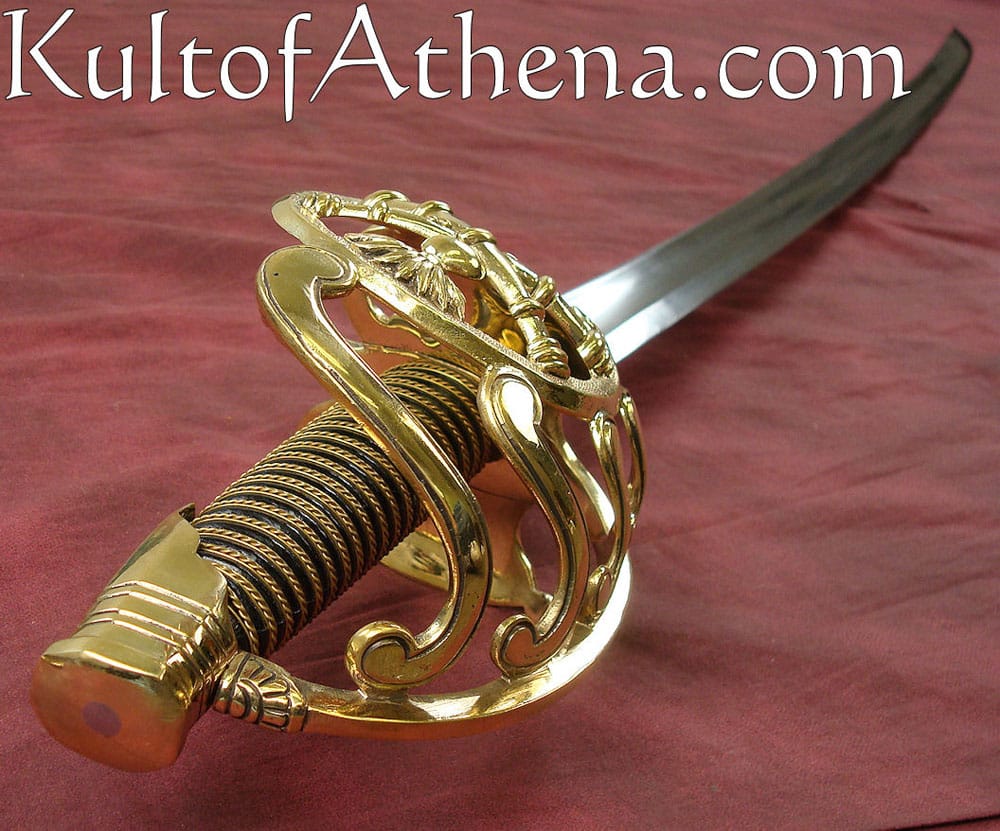

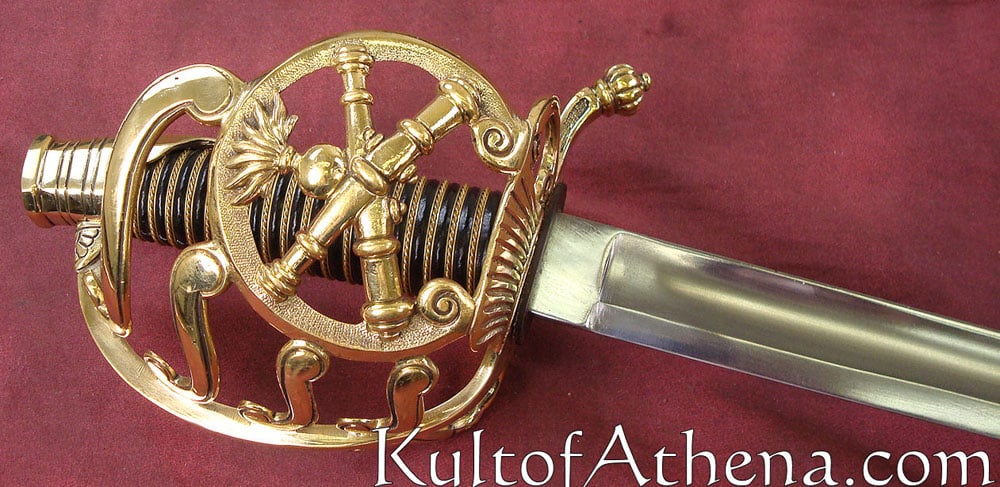
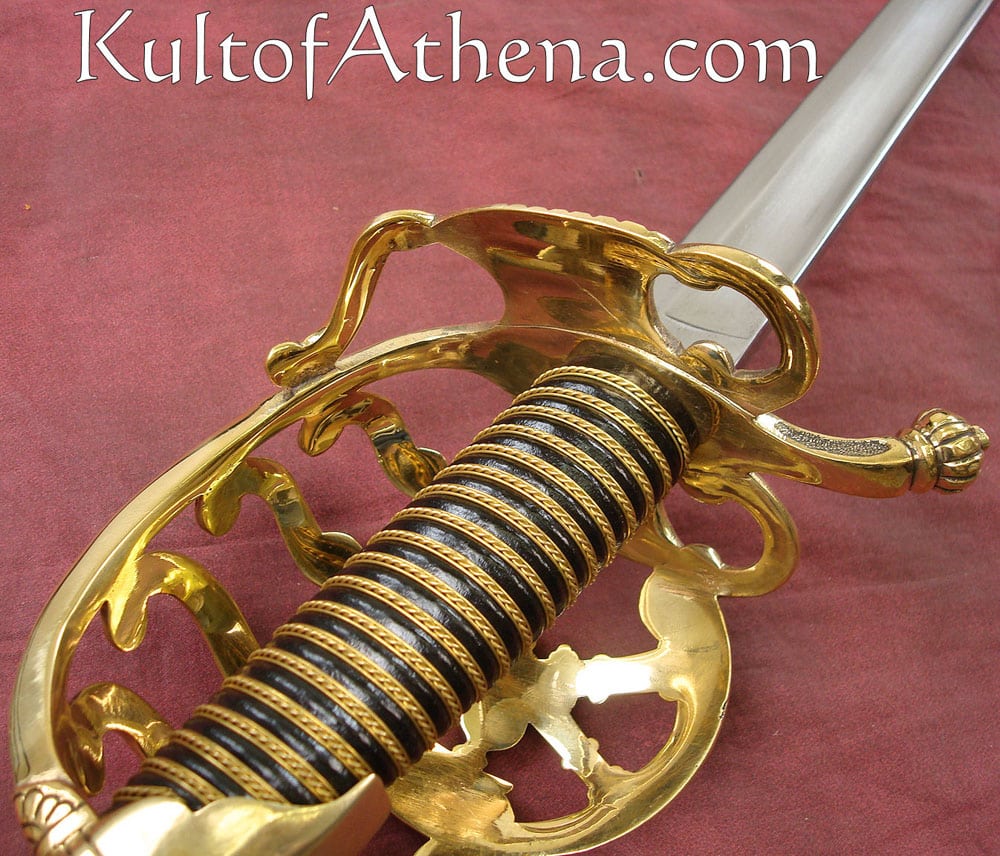
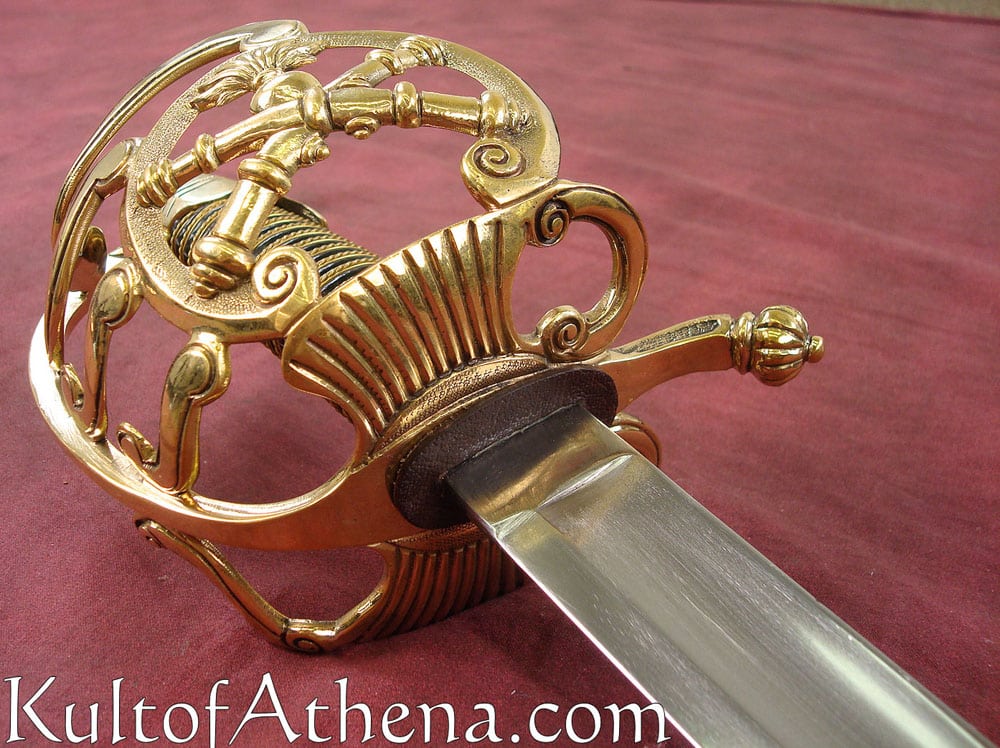

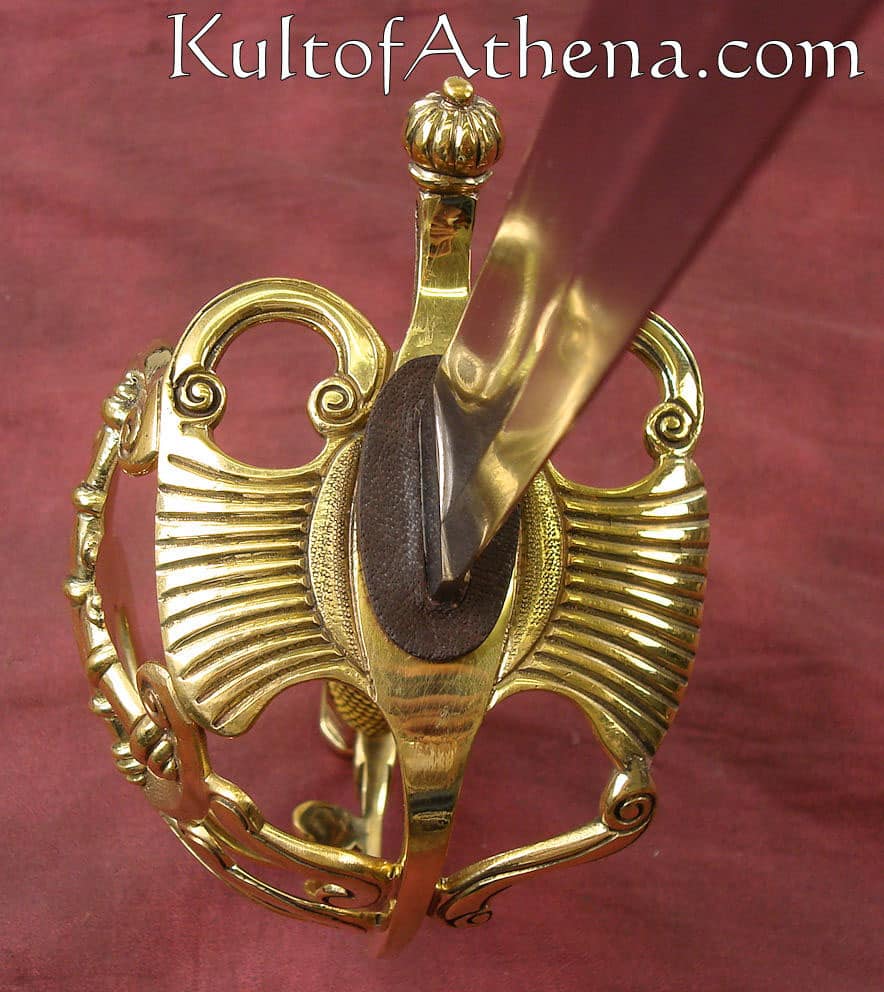

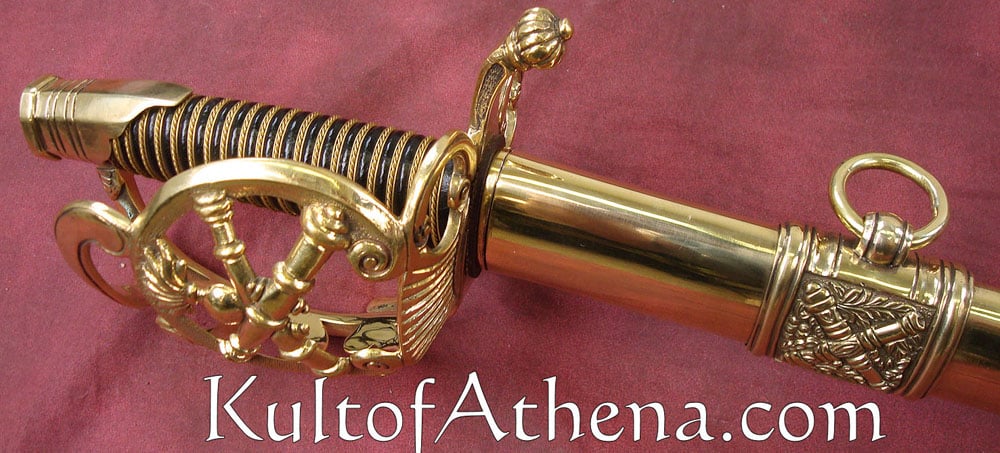

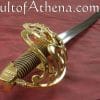
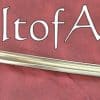
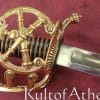
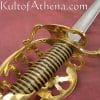
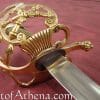
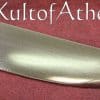
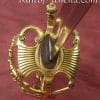
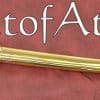
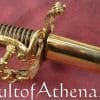
Reviews
There are no reviews yet.